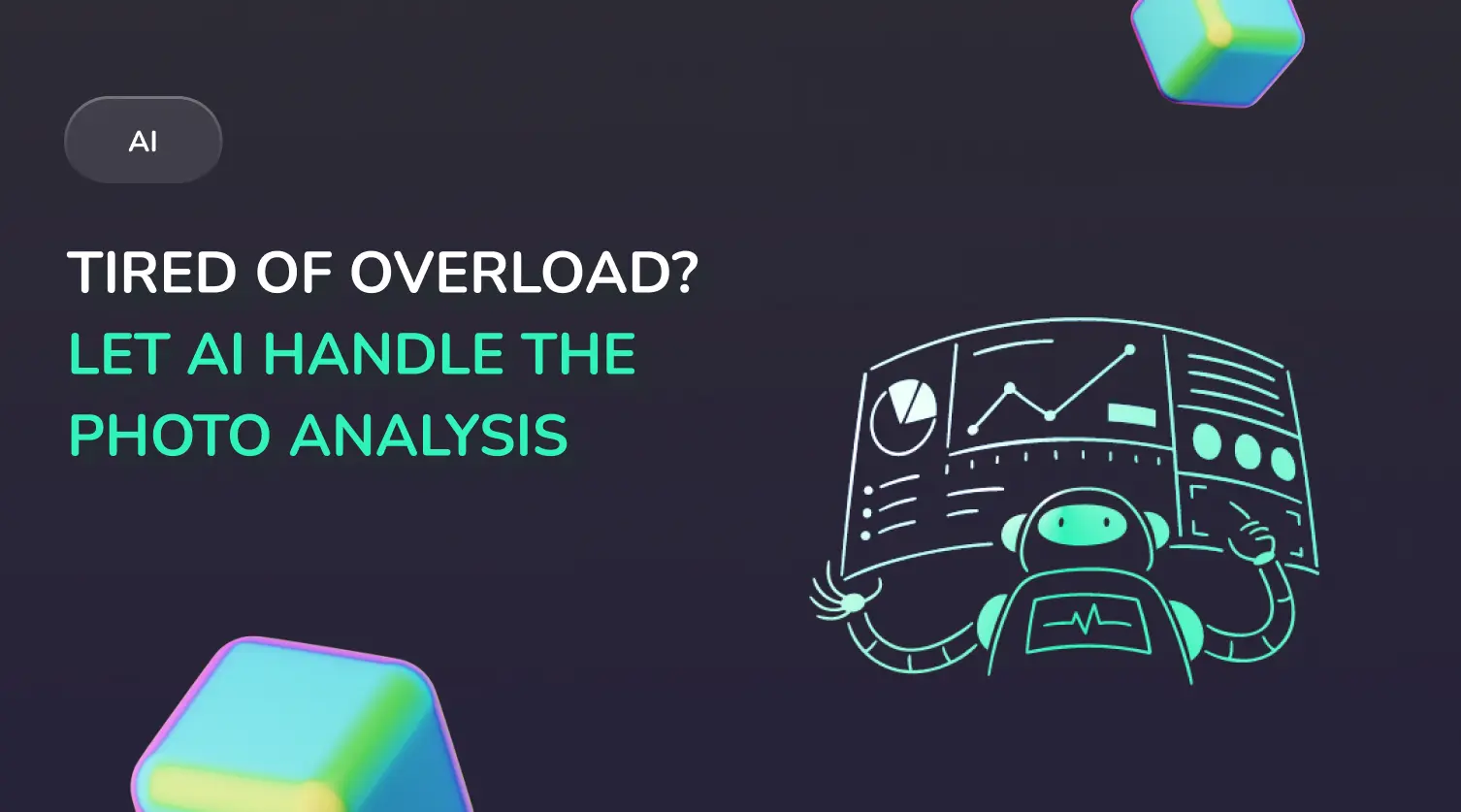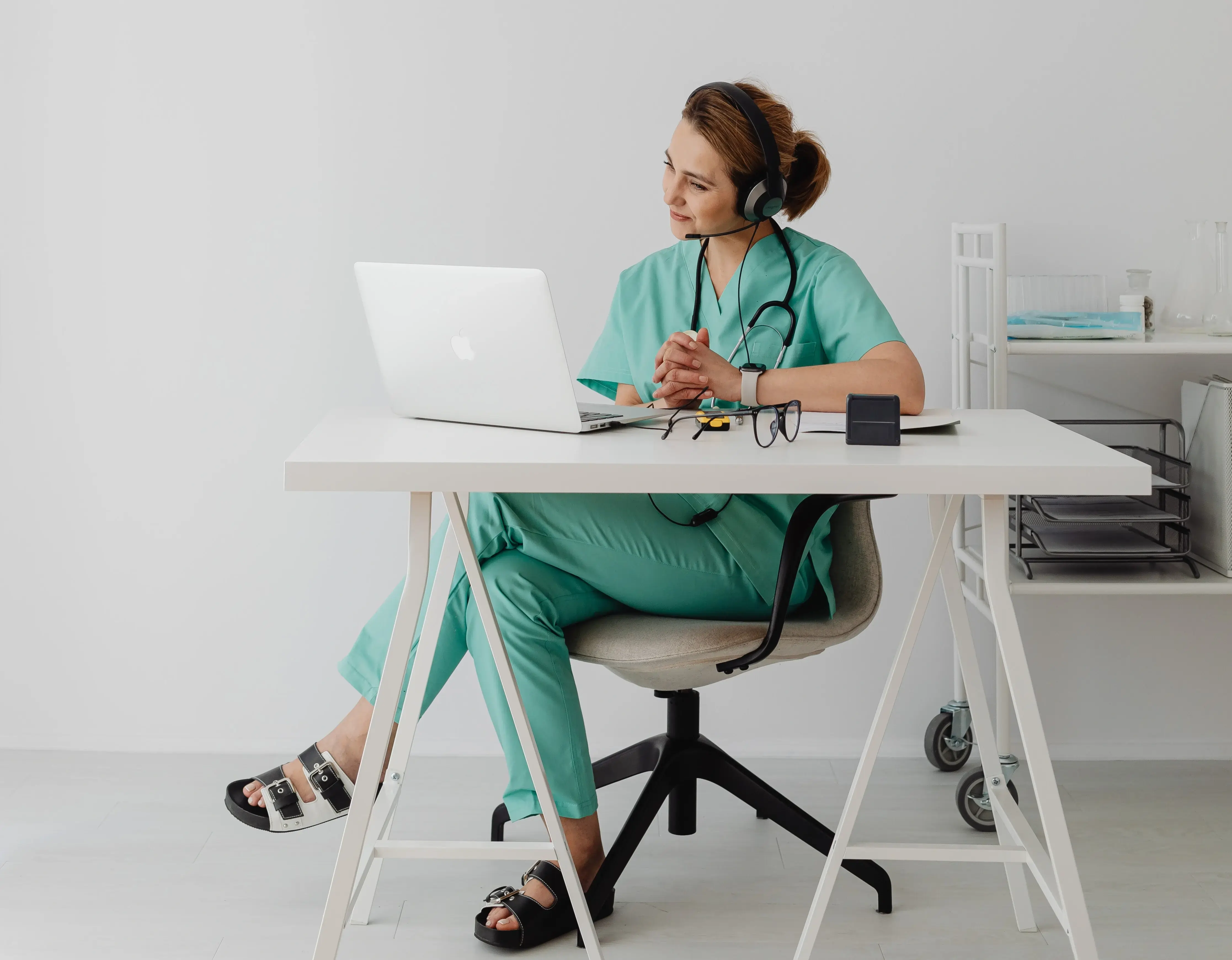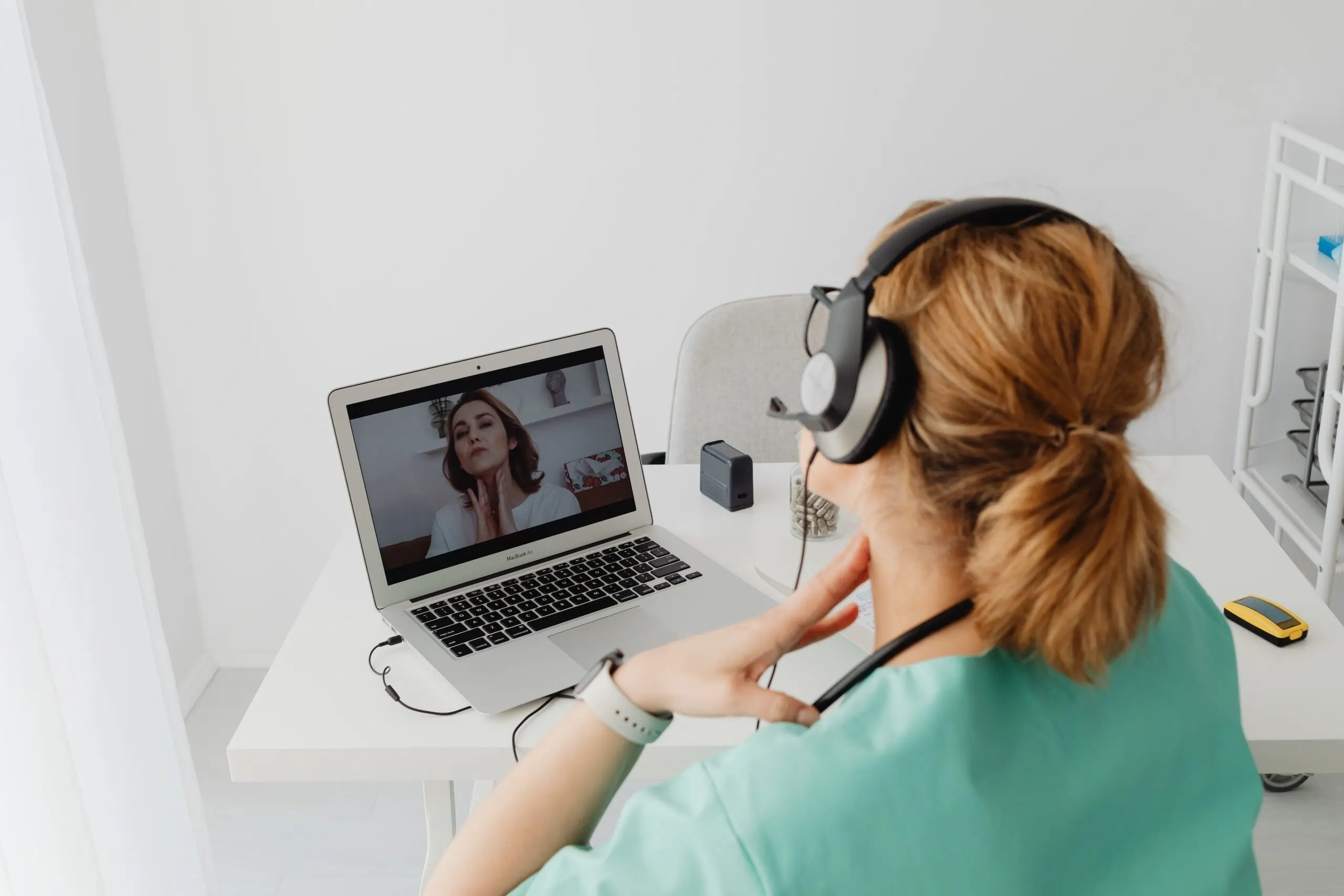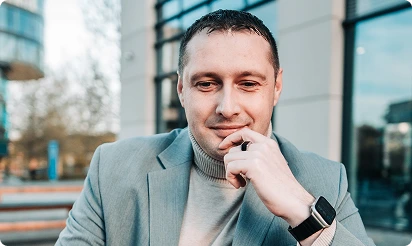
Modern healthcare after the pandemic is under remarkable pressure. Clinics are still overwhelmed, while doctors are stretched thin with the demand for faster, more accurate diagnostics. With a shortage of medical personnel and rising patient expectations, you need to try to do more with less and don’t overburden the staff.
So, nowadays, doctors need to use digital tools that simplify their work. And AI photo identification tools have become essential for clinics and insurance companies. These apps can fully automatically triage patients and track their treatment progress. This technology helps clinics work smarter, not harder, and brings a bit of relief to both doctors and patients.
Interested in how this technology works and how it can benefit you and your clinic? Keep reading to find this out!
What is AI Photo Identification in Medicine?
AI Photo Identification (sometimes referred to as AI-powered image analysis) utilizes machine learning algorithms, often convolutional neural networks, to analyze photos taken on smartphones or specialized devices, recognizing medical patterns and suggesting diagnoses. It drastically speeds up initial health assessments and supports clinicians.
AI-assisted documentation, such as ambient scribes, saves physicians approximately one hour per day. The Permanente Medical Group recently reported that their implementation of AI scribe technology has saved doctors, on average, an hour at their keyboard every day. In the first week of their study, the AI scribe was utilized over 20,000 times.
Here is how the typical workflow of an AI photo analyzer looks:
- Image capture. Patient or clinician photographs signs (e.g., skin lesion, reddened eye, oral mucosa).
- Upload and processing. The image is uploaded to a medical app or platform where AI analyzes it.
- Analysis and comparison. AI compares visual data to large databases of confirmed cases.
- Preliminary output. The system provides possible diagnoses, risk level, and suggestions (e.g., consult a dermatologist).
- Integration with care units. The results are sent to electronic health records and reviewed by professionals.
Such apps are already popular in dermatology, dentistry, ophthalmology, and even radiology, where they help detect issues from photos, X-rays, posture, footwear wear, and other sources. Dermatology case studies show AI rivaling expert accuracy. A meta-analysis found that AI tools’ sensitivity is ~87%, while clinicians demonstrate ~80% effectiveness.
AI tools reduce analysis time for skin lesions from 20 minutes to just 5. So, slowly, these solutions become full-fledged copilots for many doctors.
Cut diagnosis time, boost precision. Integrate AI photo ID with the Corpsoft Solutions team today.
What’s Inside the AI Image Identification Technology?
Imagine AI as a detective that never tires and sees what even the most experienced eyes might miss. It has been trained on hundreds of thousands, if not millions, of medical images, and this knowledge base continues to grow every day.
Unlike a human who can get tired or overlook subtle symptoms, AI doesn’t blink, pause, or forget. It processes every image with the same level of precision. What makes this even more powerful is that such AI tools learn from real cases, not some random photos from the internet.
And here’s the best part: this system is constantly evolving. The more cases it sees, the smarter it becomes. Like a doctor gaining experience with every patient, AI improves with every image.
Real-Life Use Cases of AI Photo Identification in Medicine
AI tools are already a part of the healthcare industry, and they help doctors and patients in their daily routines. For instance, Chelsea and Westminster NHS Trust hospitals in London implement the Derm AI system from Skin Analytics, which is used to analyze skin lesions. Patients simply photograph suspicious moles using an iPhone equipped with a lens, and the AI analyzes them in seconds.
Derm is now deployed across 20 NHS hospitals and has helped detect over 13,000 cases of skin cancer. Clinics like OneWelbeck now use AI mole-mapping via high-resolution scanners + AI. These ensure precise lesion tracking for high-risk patients (~£495 per scan). Meanwhile, Swedish doctors became the first ones to use the First Derm app, which is now commonly used throughout Europe.
3. What Problems Does AI Photo Identification Solve?
Today’s healthcare systems are overwhelmed. Doctors juggle multiple tasks, appointments are rushed, and even premium clinics rarely offer in-depth consultations. Spending 3–4 hours with one patient just isn’t realistic, even if they wanted to. AI photo identification helps streamline routine diagnostics, making care more efficient and accessible.
| Problem | How AI Solves It | Benefit for Patient/Doctor |
| Physician overload | AI handles the initial image analysis | Doctors can focus on complex cases, not the 50th mole of the day |
| Long queues & delayed diagnoses | The image is analyzed in seconds, remotely | Patients get preliminary feedback faster with no waiting |
| Lack of specialists in rural areas | Only a smartphone and the internet are needed | A person in a remote village can screen skin issues without a hospital trip |
| Human error (fatigue, distractions) | AI doesn’t get tired | Lower risk of overlooked or misjudged symptoms |
| Wasted time on non-serious cases | AI filters out trivial symptoms | Doctors don’t waste bandwidth on rashes or mild irritation |
| Shallow follow-up care | AI compares image sequences over time | Progress is tracked visually, even without follow-up visits |
| Distrust of “Google self-diagnosis” | AI uses real, verified medical datasets | Patient gets grounded, objective risk assessment, not vague guesses |
🧠 Important note: AI doesn’t replace a medical diagnosis. It assists in triage and preliminary risk assessment, but a licensed clinician always has the final word.
What Medical Processes Have Already Improved Thanks to Photo Identification?
Just 10 years ago, in 2015, we could only imagine what it would be like to automate medical image identification with the power of AI. But now it’s a part of the medical landscape that helps patients and clinicians make faster, smarter, and more resource-efficient decisions. Here are just a few processes already enhanced by image-based AI:
- Spotting suspicious moles
- Pre-screening patients
- Triage in telemedicine
- Tracking treatment progress
- Filling out medical records
- Boosting clinic efficiency and revenue
Let’s examine each of them in more detail.
Spotting Suspicious Moles or Rashes
Not every spot is a reason to panic, but not every “normal-looking” mole is truly harmless, either. AI photo analysis tools can help you tell the difference.
These algorithms are trained to detect what the human eye might overlook: subtle changes in symmetry, color, border shape, or growth rate. And this isn’t just a visual match with a textbook melanoma, but more like a pattern recognition based on thousands of clinically validated images.
This kind of pre-screening usually leads to one of two outcomes:
- Either it reassures the patient immediately,
- Or it flags the need for urgent referral to a specialist
There are a lot of mole-scanning apps that already use AI to help you and your patients catch melanomas and basaliomas early.
Scan smarter, not harder. Explore AI skin analytics apps with the Corpsoft Solutions team today.
Pre-Screening Patients for In-Person Consultations
Not every symptom requires an urgent doctor’s visit. But postponing care with the hope it “will go away” isn’t a good option either. This is where AI photo identification acts as a time-saving filter for both patients and doctors in various fields, from dentistry to rheumatology.
If the system didn’t see any warning signs, it will recommend that a patient keep monitoring or book a consultation with a doctor within a few weeks. If something looks “off,” the AI photo identification tool advises the patient to see a specialist promptly.
Tracking Treatment Progress Over Time
The human eye isn’t a calibration tool. Even if a doctor takes “before” and “after” photos, visual assessment is always a bit subjective. And patients don’t always take pictures in the same lighting, from the same angle, or distance.
Meanwhile, the photo analyzer AI software never gets tired. It never forgets even the smallest details, such as Inflammation or tissue color changes, appearance of new elements, or even signs of stability.
This allows decisions to be based not on gut feeling but on clear, measurable change. Plus, AI can automatically log these changes in the patient’s electronic health record. Both doctor and patient can clearly see whether something has changed.
Automating Medical Recordkeeping
Photos and AI-generated insights are automatically pulled into the patient’s electronic medical record. That way, the doctor receives clear, structured information without having to ask:
“When did this symptom appear?” or “What did it look like at the start?”
It saves valuable time and reduces errors that are often caused by human memory or fatigue. As a result, your team gets cleaner medical records without spending that much time on them.
Boosting Clinic Efficiency and Revenue
AI-powered photo identification doesn’t just benefit patients and doctors. It brings tangible value to healthcare providers as well. By automating triage, early assessment, and documentation, staff can handle more cases without burning out.
Clinics can expand telemedicine services, offer paid remote screenings, or implement AI as part of premium care packages. Meanwhile, with the support of AI-based photo tagging software, even smaller clinics can offer dermatology triage, wound care follow-up, or post-op monitoring, without hiring new specialists.
Offer premium care without premium staffing. Implement AI-based tools with the Corpsoft Solutions team.
Real-Life Use Cases of AI Photo Identification in Medicine
AI tools are already a part of the healthcare industry, and they help doctors and patients in their daily routines. For instance, Chelsea and Westminster NHS Trust hospitals in London implement the Derm AI system from Skin Analytics, which is used to analyze skin lesions. Patients simply photograph suspicious moles using an iPhone equipped with a lens, and the AI analyzes them in seconds.
Derm is now deployed across 20 NHS hospitals and has helped detect over 13,000 cases of skin cancer. Clinics like OneWelbeck now use AI mole-mapping via high-resolution scanners + AI. These ensure precise lesion tracking for high-risk patients (~£495 per scan). Meanwhile, Swedish doctors became the first ones to use the First Derm app, which is now commonly used throughout Europe.
How to implement AI photo-identification in your clinic or private practice
An AI healthcare tool might sound complicated, but in reality, it’s just another simple tool in your medical toolkit. Yes, there’s a bit of technical setup involved. But the payoff is massive.
To make it work in your clinic, you don’t need magic. Just ensure that you have a clear plan and the right partners by your side. Here’s how it usually happens:
- Choose the right platform
- Integrate it with your EMR or MIS
- Training your team
Yes, it’s that simple. Let’s examine how to create a photo identification app that perfectly suits you.
Choose the Right Platform
Start with the foundation, and choose AI identification that suits your specific case. There are no one-size-fits-all solutions that fit every clinic. You need to evaluate your needs and ask yourself, “What do you need?”
What exactly can the system do? Can it detect skin pathologies, identify eye-related issues, or flag other visible symptoms? Choose a platform that meets your current needs but also allows for future scaling. Avoid overspending, but don’t go too cheap either.
The perfect AI platform for photo-identification shouldn’t just be smart; it needs to be legally compliant. In other words, ChatGPT won’t cut it. Look for solutions that are clinically validated and hold relevant certifications (like a CE mark in Europe or FDA approval in the U.S.).
Integrate the solution with EMR/MIS.
Remember: a photo without context is just a picture. But once AI photo identification analyzes the image and puts it inside the Electronic Medical Record (EMR) or Medical Information System (MIS) with the pre-conclusion, a doctor can see the patient’s full story.
It saves doctors’ time since they don’t need to copy or enter data manually. This decision also lowers the risks of human error, since there will be no missing files, no miscommunication, and no forgotten details. The algorithm helps doctors connect the dots, leading to more informed decisions.
Train the Team
Even the smartest algorithm can’t replace a doctor since visual analysis software is just an app, not a decision-maker. But if you want your team to be efficient, you need to show them that AI tools are their friends, not the enemy. So, involve them early, asking for feedback during pilot testing, and they’ll feel ownership, not a threat. If they have any questions, explain to your team everything. Frame AI as a burnout shield, not a competitor.
You need to train your team to take proper photos since even the best AI can’t guess what’s outside the frame or blurred by motion. You also should teach them to sort which cases should be examined with AI tools and which should go straight to the doctor.
Keep in mind that computer image software is only for triage and screening, but not for emergencies. AI gives a preliminary analysis, not a definitive diagnosis. Think of it as a clinical nudge, not a final say.
Basic Infrastructure: What You Actually Need
You don’t need a sci-fi clinic to start using AI photo-identification. But a few non-negotiables will make or break the experience. Here’s what’s essential:
- A smartphone or tablet with a good camera. Cheap models often distort color or over-smooth images, while skin conditions rely on tiny details.
- Proper lighting setup. Look for natural-light bulbs with a temperature around 4000-5000 K, and avoid yellow incandescent or flickering LED lighting. It can distort skin tone and hide details.
- Stable Internet Connection and powerful Wi-Fi transmitter. Lag can delay care or frustrate both doctors and patients.
- Basic EMR systems to store images with date, symptoms, AI results, and follow-up.
- Ensure proper patient identification. Use labels, stickers, or app-based tags to link each photo to the correct patient.
- Implement regular data backup. If you lose photos, you are losing evidence, context, and clients’ trust. So, ensure that your visual intelligence software backs up data in real time (preferably encrypted and HIPAA/GDPR compliant).
Why Do You Need IT Partners To Make Your Dreams Come True
Let’s be real. Most clinics don’t have a dedicated tech team for AI identification tools, so their staff are forced to learn everything on their own in their free time. However, it repels your staff from the tool.
So, the smartest thing you can do is bring in a partner who knows this territory and can make things just work. At Corpsoft Solutions, we don’t throw you a platform and walk away. We develop software solutions, helping you understand what you actually need, pick tools that fit your workflow (not the other way around), adapt them to your clinic, and make sure your team isn’t left staring at a screen wondering what to click.
We train your staff in a way that makes sense, with a language that can be understood by a 60-year-old granny who is far from tech. We show them when image identification AI tools are useful and when a human eye matters more. And we help avoid that common fear: “AI will replace me.” No, it won’t. It’ll just help your team move faster, with fewer errors and more time for real patient care.
Security? Covered. We encrypt everything, from images and patient IDs to conclusions. No, Everything runs on GDPR-compliant infrastructure, and we also cover HIPAA and PCI HIPAA requirements when needed. Your staff only sees what they’re supposed to see, and every access is logged.
Wrapping Up
AI-based photo identification isn’t some “tech of the future”. Today, these tools are a practical solution that helps healthcare businesses in daily tasks, reducing the load on doctors, speeding up diagnostics, and bringing more clarity to medical decisions.
However, you still need to remember that AI photo tagging software never replaces the doctor, at least in the next decades. We aren’t living in the world of the “Futurama” series where robots are as intelligent as humans. So, for at least a few decades, AI-based tools will be only a copilot to your team.
We’ll help you choose the right platform, handle integrations, train your team, and make sure everything runs smoothly, from cybersecurity and backups to full compliance with HIPAA and GDPR.
Subscribe to our blog


